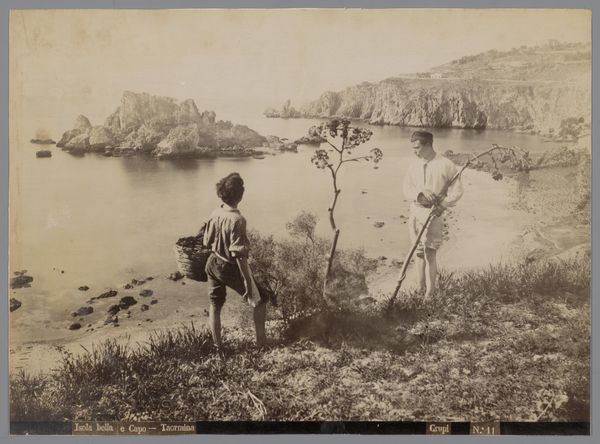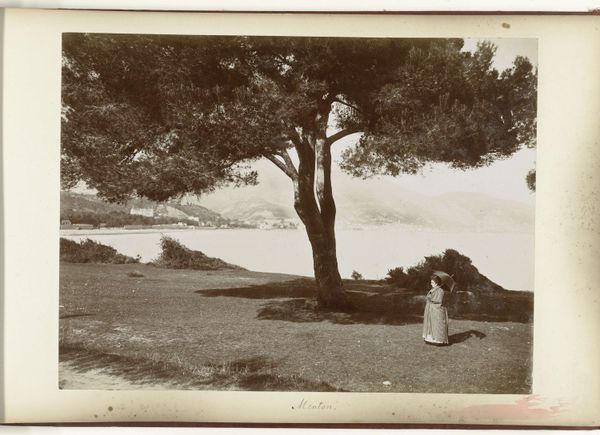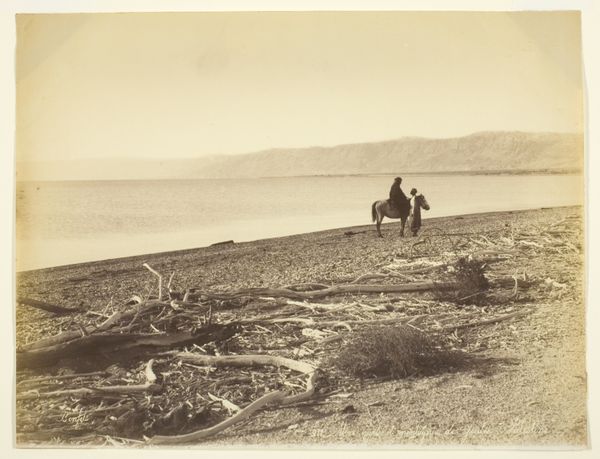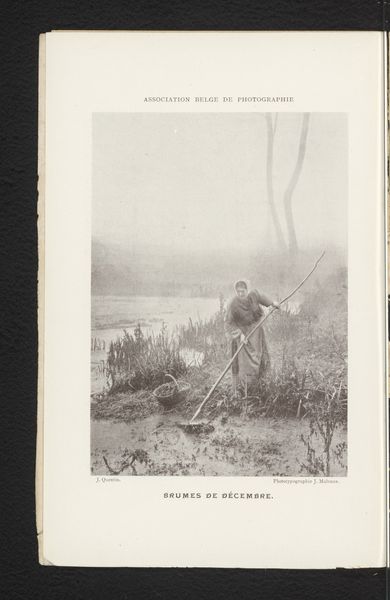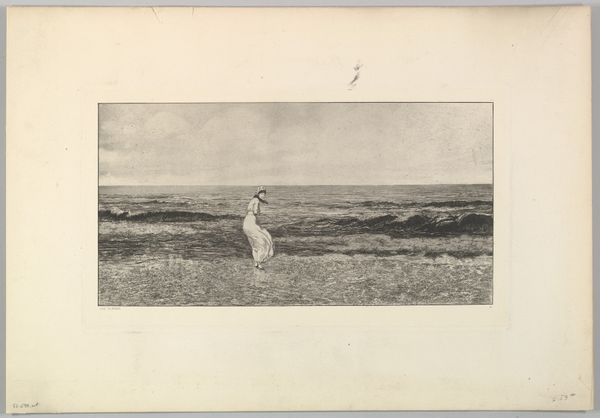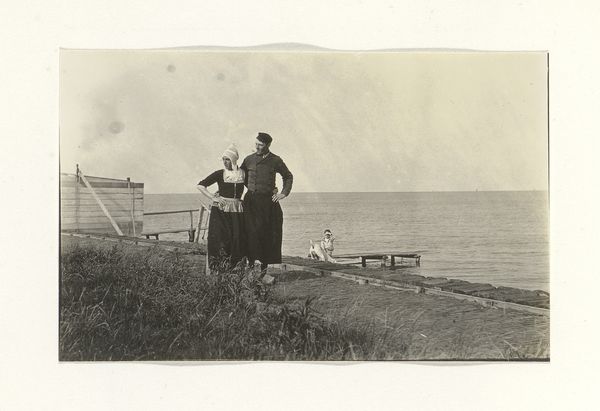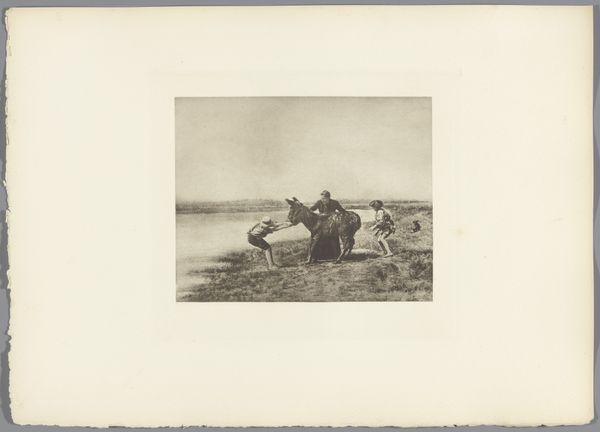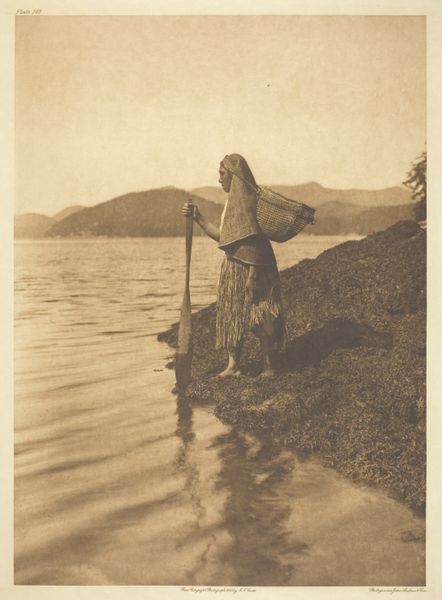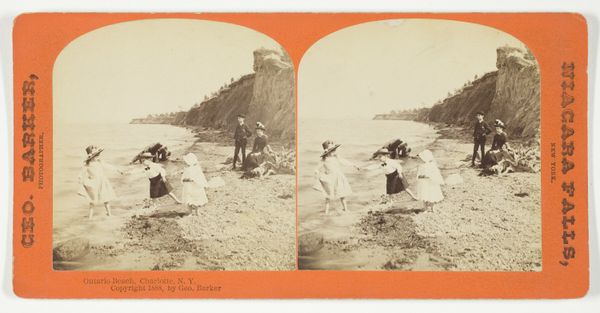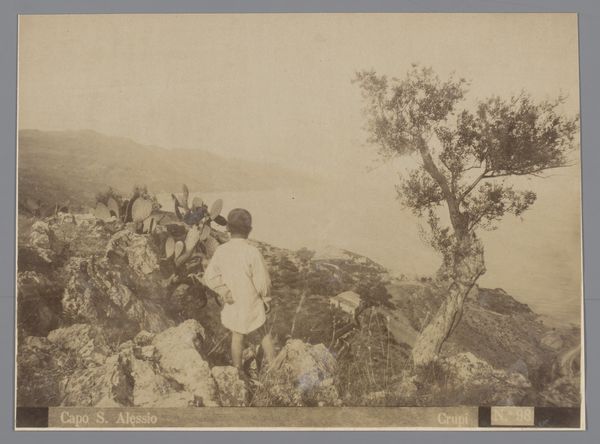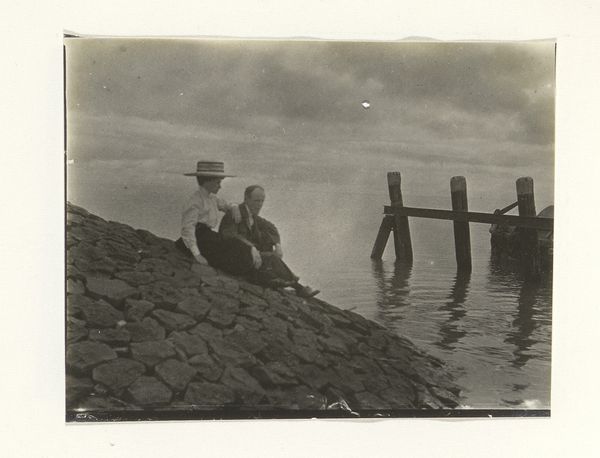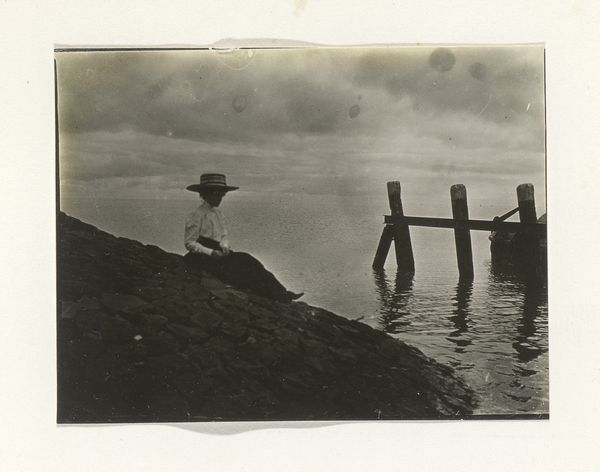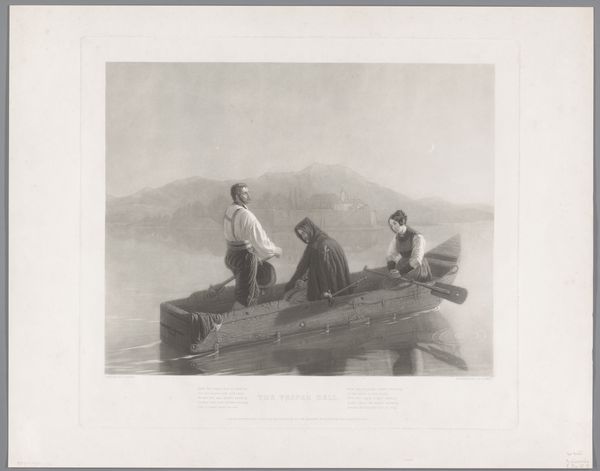
Man met een kruik op zijn rug, staande aan de baai van Sicilië, Italië 1851 - 1900
0:00
0:00
photography, gelatin-silver-print
#
portrait
#
landscape
#
photography
#
orientalism
#
gelatin-silver-print
#
genre-painting
Dimensions: height 256 mm, width 365 mm
Copyright: Rijks Museum: Open Domain
Editor: We're looking at "Man met een kruik op zijn rug, staande aan de baai van Sicilië, Italië," a gelatin silver print made sometime between 1851 and 1900 by Giovanni Crupi. There's a lone figure with his back to us, carrying a large jug, against the backdrop of a vast bay. The overall sepia tone gives it a real sense of timelessness, almost staged. What jumps out at you in this photograph? Curator: It’s interesting how Crupi uses the picturesque landscape tradition to frame labor. This image participates in a long history of depicting the “exotic” South for a Northern European audience, perpetuating ideas of Italian life focused on physical work within a beautiful, yet somehow “backward”, setting. Does the man *have* to carry the jug that way, in that place? Is this just to illustrate regional character and traditions for tourists and an eager public back home? Editor: So you see it as a kind of… constructed reality? Meant to feed a specific image? Curator: Precisely. The placement of the figure within the landscape and the "genre-painting" quality hints that this photograph exists to satisfy specific expectations. Think about how photographs of the time shaped understandings and even policies relating to Southern Italy. Who was circulating these images and for what purpose? Were they scientific studies, souvenirs, postcards? These contexts radically change how we interpret the image of this worker. Editor: That definitely shifts how I see the piece. I was caught up in the visual appeal, but not thinking critically about its broader implications. Curator: It’s about understanding photography not as neutral documentation, but as a carefully crafted form of visual rhetoric that engages with existing power structures. Editor: I see what you mean. It is quite striking to view the social context of an artwork. Thanks for the explanation! Curator: Absolutely, the pleasure is mine. Analyzing how historical images influence social perspective helps develop an astute reading and critical thinking.
Comments
No comments
Be the first to comment and join the conversation on the ultimate creative platform.
